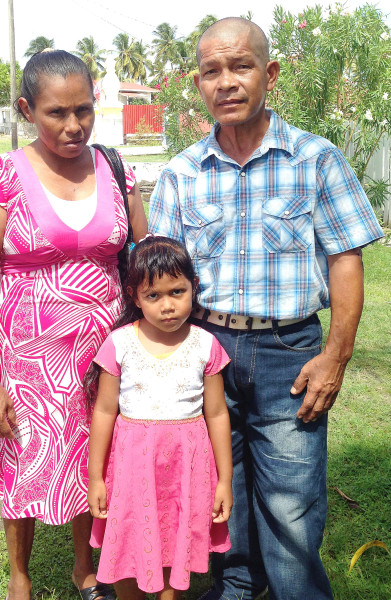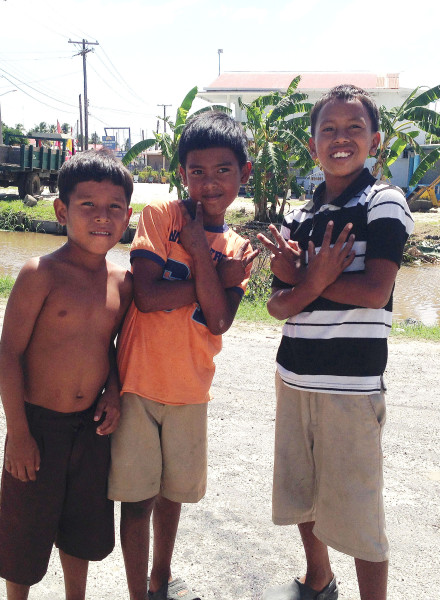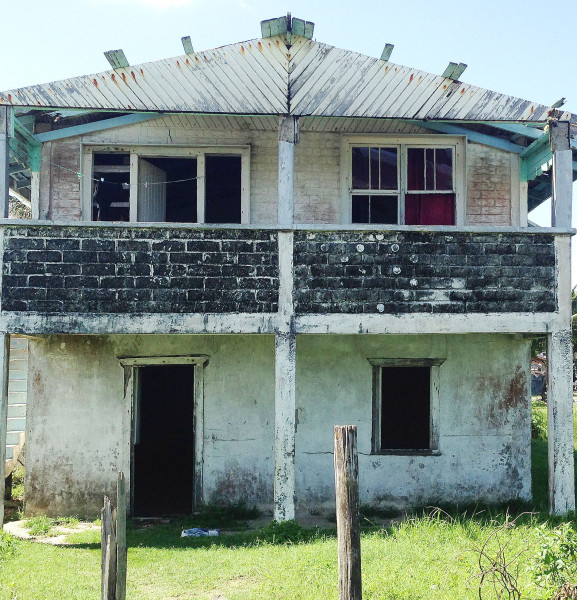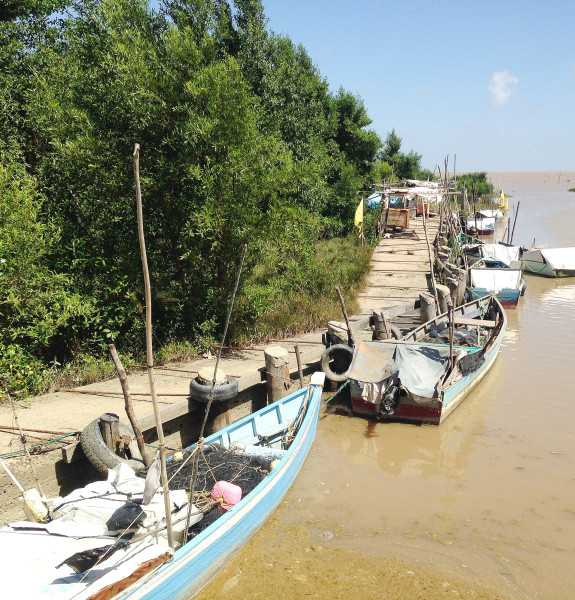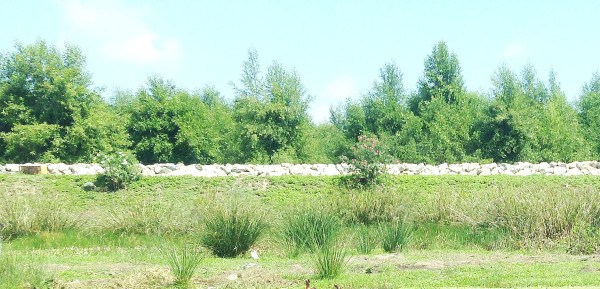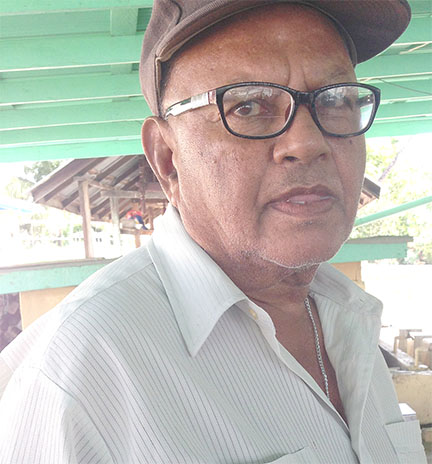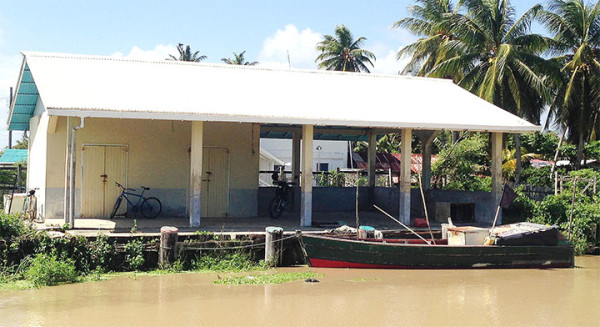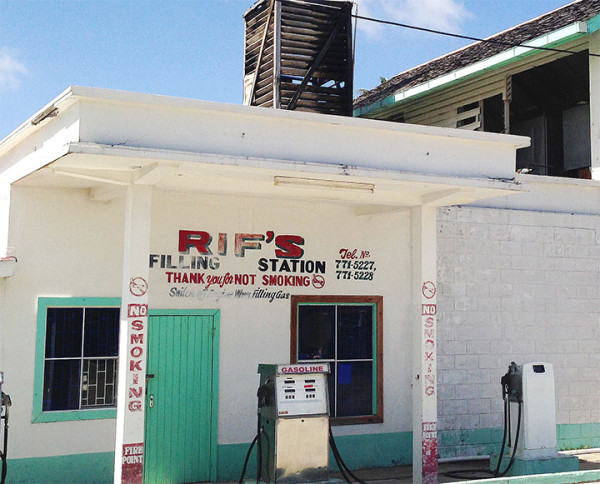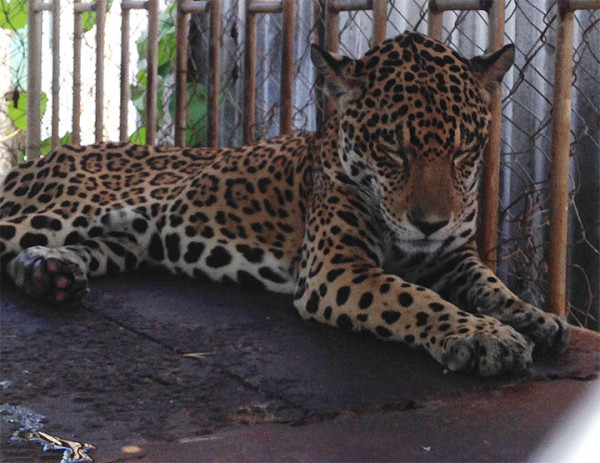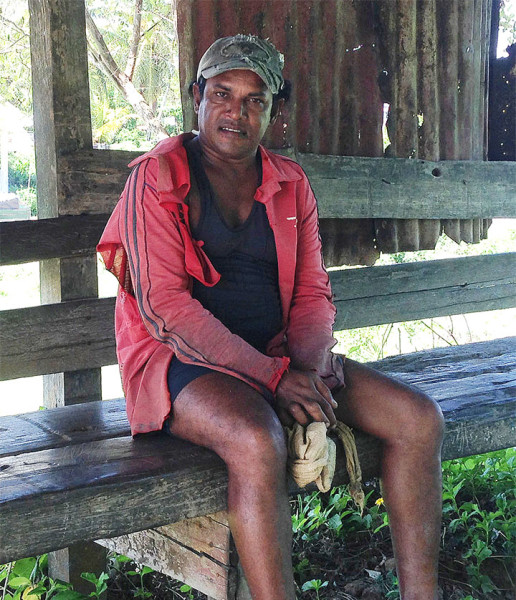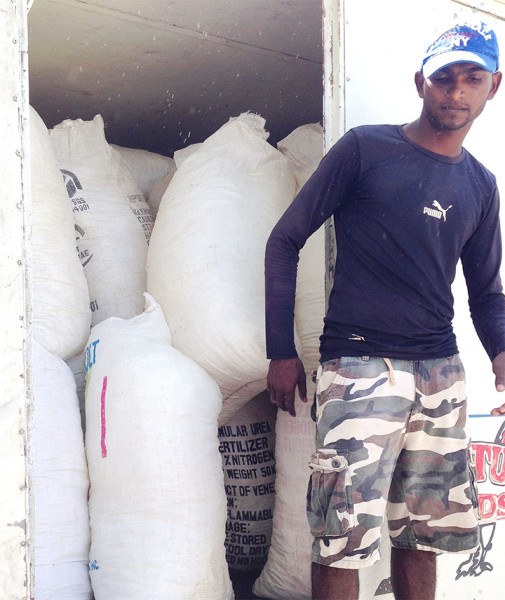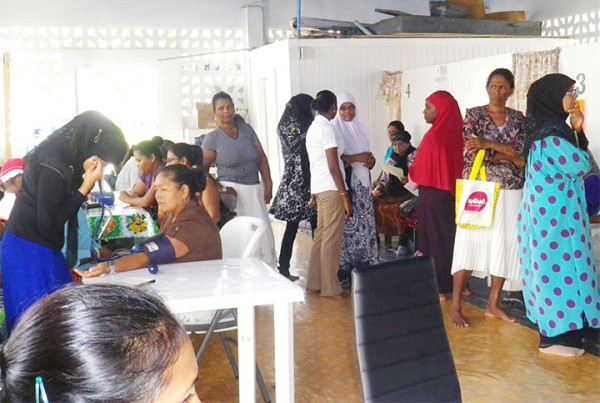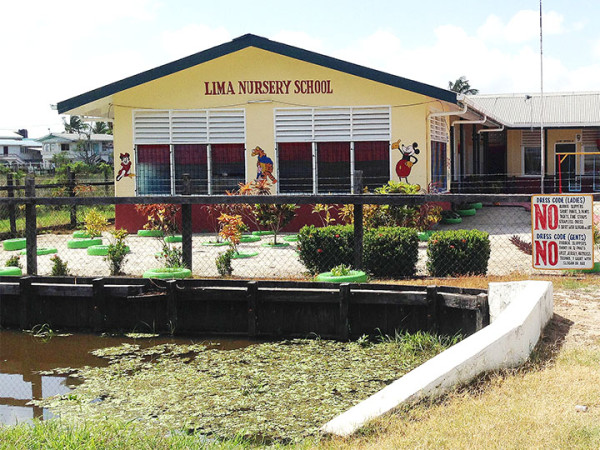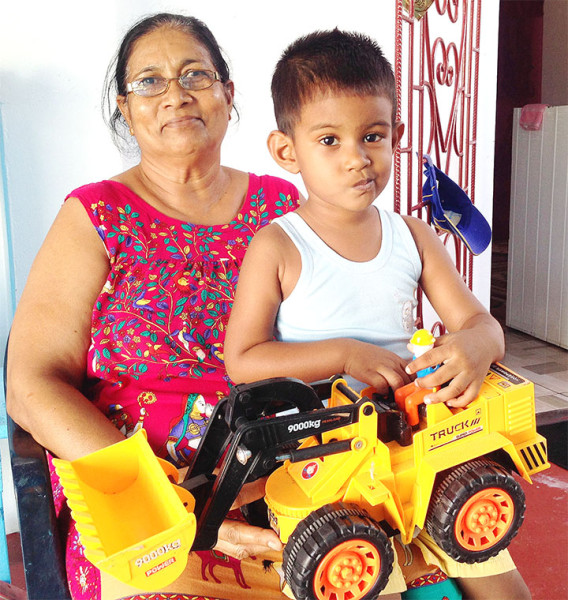Story and photos by Shabna Rahman
Rakesh Singh sat under a shed looking at the fishing boats moored in the river near the koker. He was once a thriving fisherman who would venture 25 to 30 miles out at sea in his boat and return several hours later with his catch of gilbaker, snapper and trout.
But six years ago he was a victim of a hit and run accident that changed his life. Rakesh sustained injuries to his head and feet and was almost paralyzed on his left side. Although the driver of the vehicle that struck him was later caught, he was not charged and is driving freely.
Singh started walking with crutches, then with the help of a cane before learning to walk on his own all over again. It took a toll on his earnings and he was forced to sell the boat to maintain his family.
He is happy to be back on his feet so he can provide for his wife and four children, although not as before. All he does now is set his seine close to the shore where he catches smaller fish including mullet and banga mary which he retails “on the road.”
Nearby, workers were busy putting the final touches to a pump station as they prepared for its commissioning.
The pump replaces a smaller one that had not been adequate to provide proper drainage to residents, especially those involved in rice farming.
They had suffered losses to flooding during the heavy rainfall and are grateful for the new pump, as it would bring them relief.
The project, which cost $191.5 million, was undertaken by Samaroo’s Investment and got started in January of this year.
Ice factory
Fishing is one of the main forms of income in the community. The fishermen are members of the Lima/Sparta Fishermen Development Association, which represents their rights.
They do not have to go very far to purchase ice to ply their trade, as there is an ice factory that has been operating in the village for the past 20 years. It supplies ice to fishermen and to other residents for weddings, parties and other occasions.
It is run by Reyaad Khan, whose father Arif Khan also operates a gas station at the location.
Workers were busy at the ice factory packing ice in large poly bags and loading them into a Canter truck belonging to a businessman.
Sitting nearby in a cage was a ‘pet’ Reyaad’s father had gotten as a baby. It was not your usual pet though; it was a big jaguar which took us by surprise and made us take a step backward.
It didn’t take us long to get accustomed to its presence and start taking photos. When we commented that we weren’t getting it—the photo—properly, one of the workers jokingly responded: “Be careful before it gets you.”
Rice farming seems to be a main form of income in the village while some residents operate other businesses. Others earn their living as labourers and clerks in private or government offices.
There is a nursery school in the village as well as a mandir, a mosque and a water treatment plant.
The village has a mixture of ethnicities; Indo-Guyanese are the most predominant group. But there are also Afro-Guyanese along with Indigenous Guyanese who moved there from Moruka in Region One.
At the playfield in the village, some young men were rolling the pitch, apparently preparing for a game of cricket, though the grass around the rest of the ground needed cutting.
Some children were sitting in the pavilion looking on while sheep grazed on the dam nearby.
Residents said they hardly have issues in the village, which they described as being “peaceful and quiet.”
Physical therapist
Henry Hendricks, a physical therapist for the past 20 years, moved from Moruka with his family 10 years ago. He was trained as a therapist in the army where he spent eight years.
Popularly known as ‘Dr Ping,’ he travels around the country to offer massage services mainly to stroke to patients as well as to other persons suffering from sprains, fractures or muscular pain.
Hendricks works at home as well and had also operated clinics in Wakenaam and at Canal, West Bank Demerara.
His fee starts from $2,000, depending on the distance he has to travel and the nature of the complaint. He said he does not “charge Lima people because I am from Lima.”
When this newspaper caught up with him he was returning home from church with his wife, Hazel and granddaughter, Rochelle.
They have been taking care of Rochelle since her mother (their daughter) died. They have seven other children.
Roxanne Ramsuchit was busy with her grandchildren when this newspaper dropped in at her home. Her husband is a rice farmer and had gone to the backdam to tend to his crop.
Her grandson, three-year-old Sheva, climbed onto her lap with his toy truck during the interview while Saskia, 5, was enjoying her lunch of shrimp curry and rice.
The children reside at the home with their mother, Tiffany (Roxanne’s daughter) and their father who assists in the rice field.
Another daughter who lives along the coast was visiting at the time while her son was away at work in the interior.
After completing her household chores, Ramsuchit keeps herself busy in the kitchen garden or with rearing ducks. She has been living at Lima for the past 20 years.
Medical outreach
At the time of this newspaper’s visit, residents were attending a monthly clinic at the mosque. The Guyana International Relief Organization (GIRO) that is based in Georgetown conducts the clinic.
They benefit from mini health checks at the medical outreach and consultations with a doctor who diagnoses, treats or gives referrals. GIRO also provides medications to patients.
Sudesh Jeonarain, 69, who works as a security guard and plants an organic kitchen garden in his spare time, was seeking treatment at the clinic.
He said he plants, “Anything I can put my hands on – all kind greens and fruits.”
He has been living at Lima since in the 80s after moving from Huis’t Dieren.
He spent most of his life working at the Mahazarally sawmill at Supenaam, where he was a manager since the 1970s.
An elderly resident, Parsaram Singh, 73, had also gone to the clinic for a check-up. He was born on Lima Estate, which is now known as Lima Dam.
He started working as a salesman in a shop at Coffee at age 15 but shortly after he had a misunderstanding with a shop owner.
He then moved to Georgetown where he secured a job at Toolsie Persaud Investment. Two years later he returned to his former job in the village where he spent over 50 years.
A resident, A P Singh owned the village and later sold half of a house lot to residents for $500. According to Singh, “that was $1 million in those days and I couldn’t afford it so my boss gave me the money to pay.”
He recalled that as a child, his life was tough. He lost his mother when he was five years old and two years later he lost his father, both to natural causes. His older siblings took care of him and a younger sister.
Another resident, Savitri Williams, has her own struggles – she has two children with type one diabetes – Chris, 10, and Tasha, 13.
Her husband has been unable to work since he injured his leg in an accident three years ago. Her son had gone out to “hustle,” she said, referring to him begging to support the family. She also used to beg.
Simone Adams was sitting in front of her home braiding her daughter’s hair. Two other children were waiting their turn.
Other members of her extended family, who live in separate dwellings in the home, ran away, laughing when this reporter started taking photos. They did not want to “be in the papers.”
Adams does not work, as taking care of the home and children is a fulltime job. Her husband works as a mason but work is not always available.

